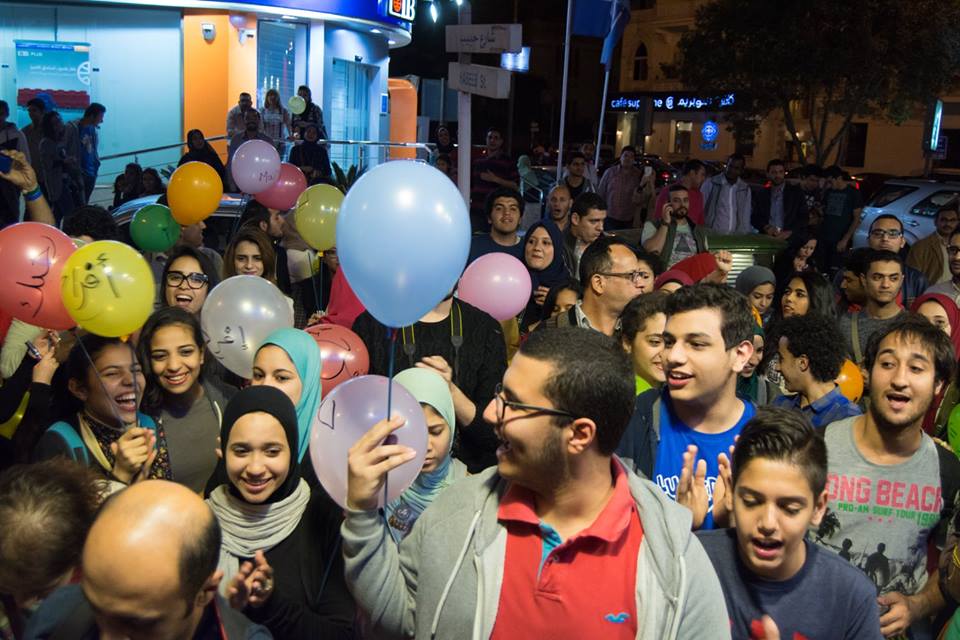Born in Cairo in 1932, sculptor Saleh Reda witnessed multitudinous important national events, and cultural movements in Egypt’s modern history. He passed away earlier this year, and Egypt truly lost one of its most important artists. Reda’s two daughters along with Zamalek Art Gallery decided to commemorate his contribution to the nation’s social and cultural landscape, by curating a retrospective exhibition from the family’s art collection. The exhibition took place last month, which was met with enthusiastic success by visitors.
In the 1960s, Reda was getting bored with the repetitive Arabic folk-centric motifs, with which he had been associated and grown so popular to. Echoing contemporary artists of his time, not unlike his peers in London and New York, he started experimenting with conceptualism, minimalism, abstract expressionism, emotional colours, and mixed mediums. He pioneered a bold, avant-garde means of directly applying pigments onto his stone and wooden sculptures.
It would not be an exaggeration to say that Reda is one of the founders of the contemporary art movement in Egypt. Decades of chiselling practice perfected his carving techniques. As skilful as he was at mastering foreign concepts, there are still fundamental Egyptian elements in his work, whether it be the colours, the subject matter, or the materials he used. You can take the man out of Egypt, but you can never take Egypt out of the man!
It is a rare combination: this openness to new concepts, courage to experiment, and advanced artistic skills that take years to acquire. He was very confident in infusing (then) fresh concepts, such as minimalism and abstract subject matter, into more ‘traditional’ Egyptian sculptural techniques and aesthetics. This blend of masterful craftsmanship deeply rooted in Egyptian homeland, and new world concepts gave birth to the practice and popularisation of what is currently considered contemporary sculpture in Egypt, disengaging from both modern, and traditional styles of previous years.
The artist once said, “painting and sculpture differ only in their linguistic approach—meanings are constant, and only the form is altered. I decided to merge the two forms of painting and sculpture in order to come up with a new approach to expression.” Reda must have been a linguistic genius, as he seemed to be able to really grasp new materials, new concepts (e.g. minimalism), and new artistic skills, while seamlessly incorporating them into his own personal creations. By painting directly onto his sculptures, he also turned sculptures into canvases.
As people ventured deeper into the gallery, they were greeted by ceramic figures which are often seen in museum Egyptology exhibits. Depending on their position, the way they sit or stand, and subtle mason’s codes, ancient sculptures related visitors a great deal about their identities. Reda was well aware of these encryptions. He painted a female figurine in a white dress, with an eye inside a heart on her chest. Was that the Eye of Horus?—which is an ancient symbol of royal power, protection, and good health? Was that the all-seeing eye, divine providence watching over humanity? Or is Reda trying to reveal to people to perceive not just with our sight, but also with our hearts?
The exhibition’s centrepiece was an oversized—literally larger than life—stoneware version of a woman, with beautiful black hair, an elongated yet elegant neck, emerald skin, and a royal blue blouse. She is depicted gazing at the audience without excitement nor judgment. She adopts half a smile, and her hands are clasped, in a relaxed manner.
In the gallery’s left-side, visitors could behold magnificent phallic wooden poles adorned in elegant gold paint. Do they shine? Are they for pharaonic rituals? Are they oversized chess pieces? One could not guess their purpose, yet still was unable to stop admiring at them. They were mesmerising.
In the bay gallery, there was a set of five earthenware collections. His terra cotta collection at first glance was clearly sculptural in form, in their original chocolate and onyx colours. These sculptures are extremely au courant, yet classic at the same time. An army of gingerbread men, adorable talking pineapple heads, endearing organic-looking creatures bouncing and waving at people, welcomed exhibition guests. It brings a smile to one’s face, as it was obvious then and there that Reda never abandoned his innocence—his inner child was always with him.
Saleh Reda was a pioneer and very active from the very beginning of his generation, and his work remains relevant. He never dismissed a cultural trend or innovative concepts. There are so many excellent, museum-quality pieces in the Retrospective exhibition. I encourage you to peruse it.




